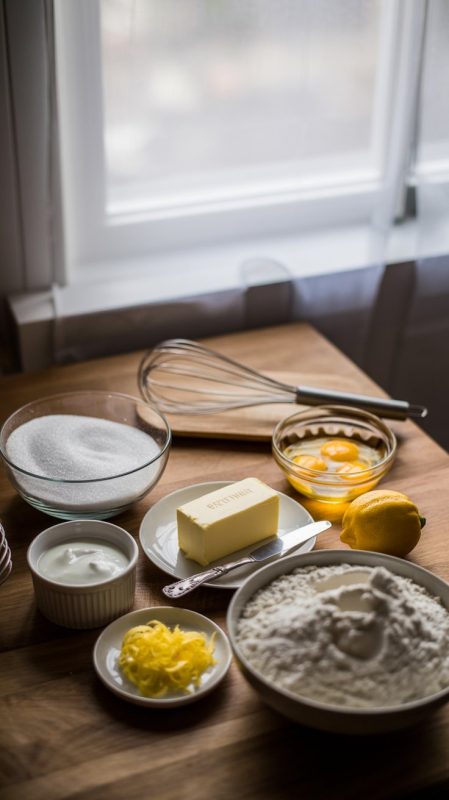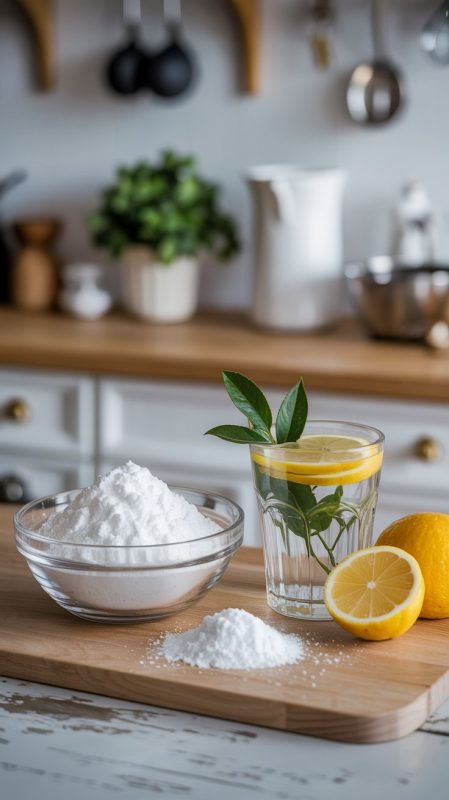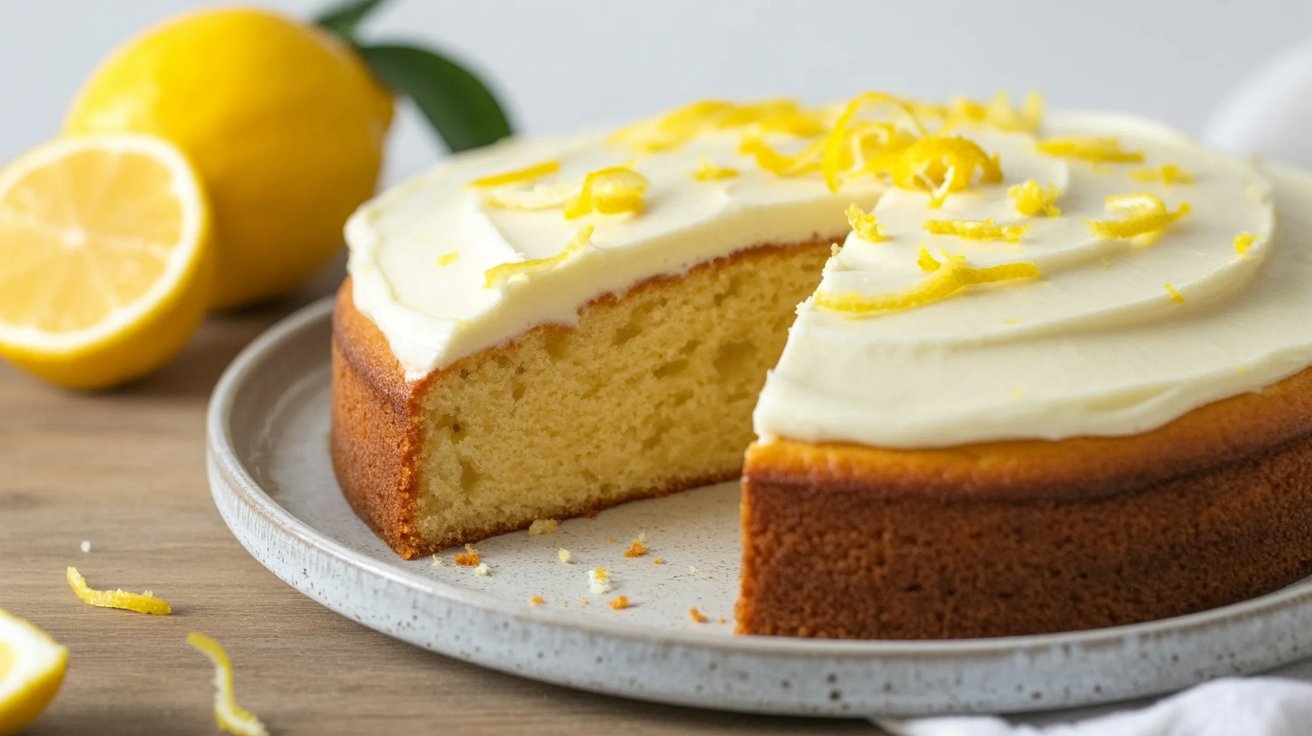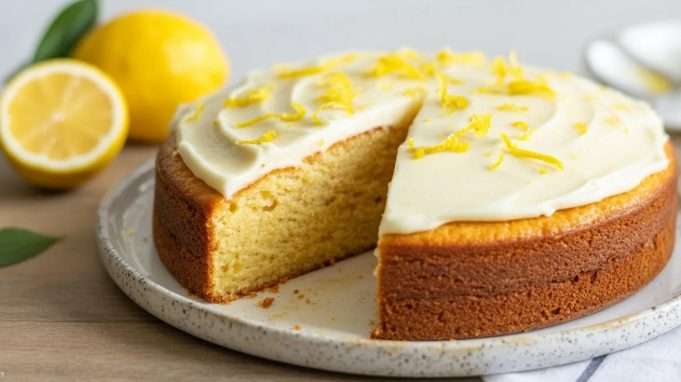A Taste of Charleston Sunshine
On a sun-drenched afternoon in Charleston, South Carolina, I found myself escaping the heat in a quaint little bookshop cafe. The air was thick with the scent of old paper and freshly brewed tea. On the counter was a simple, elegant loaf cake, glistening under a delicate lemon glaze. It was love at first bite—impossibly moist, bright with citrus, and wonderfully light. The baker shared her secret: it was a cherished recipe from British baking queen, Mary Berry. That very afternoon, I learned to make the Mary Berry lemon yoghurt cake, and it has been a staple in my home ever since. This recipe is a testament to the fact that simple, quality ingredients can create something truly extraordinary.
Ingredients for a Perfect Loaf


This recipe relies on a few key ingredients to achieve its signature moist crumb and zesty flavor. Using full-fat Greek yoghurt and separating the eggs are crucial steps for that perfect texture Mary Berry is known for.
| Category | Ingredient | Quantity | Notes |
| For the Cake | Granulated Sugar | 300g | Provides sweetness and a tender crumb. |
| Salted Butter, softened | 55g | Use softened, room temperature butter for easy creaming. | |
| Extra-Large Eggs | 3 | Separated into yolks and whites. This is the secret to a light cake! | |
| Full-Fat Greek Yoghurt | 225g | The key to a wonderfully moist and tangy cake. | |
| Zest of 1 Lemon | approx. 1 tbsp | Freshly zested for the brightest, most aromatic flavor. | |
| All-Purpose Flour | 175g | Provides the cake’s structure. | |
| Baking Powder | 2 tsp | The leavening agent that helps the cake rise. | |
| Salt | 21 tsp | Balances the sweetness and enhances all flavors. | |
| For the Icing | Confectioners’ Sugar, sifted | 115g | Sifting prevents lumps and ensures a silky smooth glaze. |
| Fresh Lemon Juice | 121 tbsp | Adds a final, sharp citrus kick to the sweet icing. |
Timing Breakdown
This elegant loaf cake is surprisingly quick to assemble. The magic happens in the oven and during the cooling process.
- Preparation Time: 15 minutes
- Cooking Time: 50-60 minutes
- Cooling & Icing Time: 30 minutes
- Total Time: Approximately 1 hour 45 minutes
Data Insight: With only 15 minutes of active work, this recipe is significantly more efficient than many layered or frosted cakes, which often require over 45 minutes of hands-on prep.
Step-by-Step Instructions
Step 1: Prepare Your Pan and Oven
First things first, preheat your oven to 350∘F (180∘C). Thoroughly grease a 2 lb (900g) loaf pan and line the bottom and sides with a single piece of parchment paper, leaving an overhang to help you lift the cake out later.
Step 2: Cream the Base Ingredients
In a large mixing bowl, use an electric mixer to cream together the softened salted butter and granulated sugar until the mixture is light and fluffy. Add the three egg yolks one at a time, beating well after each addition. Once combined, stir in the full-fat Greek yoghurt and the fresh lemon zest.
Step 3: Combine the Dry Ingredients
In a separate, medium-sized bowl, whisk together the all-purpose flour, baking powder, and salt. Add this dry mixture to the wet ingredients and fold it in gently with a large metal spoon or spatula until just combined. Pro Tip: Be careful not to over-mix at this stage; a few floury streaks are okay. Over-mixing can lead to a tough cake.
Step 4: Whip and Fold the Egg Whites
In a clean, grease-free bowl, use clean beaters to whisk the three egg whites until they form stiff peaks. This means when you lift the beaters, the peak holds its shape. Add about one-third of the whipped egg whites to your batter and stir it in to lighten the mixture. Then, gently fold in the remaining two-thirds of the egg whites in two batches. Use a slicing and folding motion to incorporate them without knocking out the air you just created.
Step 5: Bake to Golden Perfection
Spoon the light, airy batter into your prepared loaf pan and gently level the top. Bake on the middle rack of the preheated oven for 50-60 minutes. The cake is ready when it’s golden brown, has risen beautifully, and a skewer inserted into the center comes out clean. Let the cake cool in the pan for 10 minutes before using the parchment paper handles to transfer it to a wire rack to cool completely.
Step 6: Create the Zesty Lemon Glaze
Once the cake is completely cool, it’s time to ice it. In a small bowl, combine the sifted confectioners’ sugar with the fresh lemon juice. Whisk until you have a smooth, pourable icing. If it’s too thick, add a few more drops of lemon juice; if it’s too thin, add a bit more sifted sugar. Drizzle the glaze over the top of the cooled cake, letting it drip elegantly down the sides.
Nutritional Information
Here is an approximate nutritional breakdown per slice, assuming the loaf is cut into 12 generous slices.
- Calories: Approx. 265 kcal
- Fat: 8g
- Saturated Fat: 5g
- Carbohydrates: 44g
- Sugar: 32g
- Protein: 5g
- Sodium: 210mg
Disclaimer: These values are estimates and will vary based on the specific brands and types of ingredients used.
Healthier Alternatives for the Recipe
While this cake is delightful as is, you can make a few adjustments for different dietary needs.
- Reduce Sugar: You can reduce the granulated sugar in the cake to 250g without significantly affecting the texture. For the icing, use a sugar-free confectioners’ sugar alternative.
- Go Gluten-Free: Substitute the all-purpose flour with a high-quality 1-to-1 gluten-free baking flour blend containing xanthan gum.
- Lower Fat: You can use a low-fat (2%) Greek yoghurt. The cake will be slightly less rich but still wonderfully moist.
- Dairy-Free: For a dairy-free version, use a dairy-free salted butter alternative and a thick, plain dairy-free yoghurt (like a coconut or soy-based one).

Serving Suggestions
This versatile lemon yoghurt cake can be dressed up or down for any occasion.
- Classic Afternoon Tea: Serve a slice with a pot of Earl Grey or English Breakfast tea for a timeless treat.
- With a Touch of Cream: Add a dollop of clotted cream, whipped cream, or even mascarpone cheese on the side.
- Berry Beautiful: Garnish with fresh raspberries, blueberries, or sliced strawberries for a pop of color and complementary flavor.
- Personalized Tip: For a simple but elegant presentation, I love to arrange thin slices of lemon and a few fresh mint sprigs on top of the glaze before it fully sets.
Common Mistakes to Avoid
Based on feedback from fellow bakers, here are a few common issues and how to sidestep them for a perfect Mary Berry lemon yoghurt cake every time.
- A Dense or Tough Cake: This is almost always caused by over-mixing the batter after the flour is added. Fold the flour in gently and stop as soon as it’s incorporated.
- Deflating the Egg Whites: The whipped egg whites are key to the cake’s light texture. Use a large metal spoon and a gentle figure-eight folding motion to keep as much air in the batter as possible.
- A Sunken Middle: This can happen if the oven door is opened too early during baking, causing a sudden temperature drop. It can also mean the cake was under-baked. Rely on the skewer test for doneness.
- Runny Icing: If you ice the cake while it’s still warm, the glaze will melt and soak in rather than setting on top. Be patient and wait for the cake to cool completely.
Storing Tips for the Recipe
To keep your cake fresh and delicious, follow these simple storage guidelines.
- At Room Temperature: The cake is best stored in an airtight container at room temperature. It will stay moist and fresh for up to 4 days.
- Refrigeration: Avoid refrigerating the cake if possible, as it can dry out the crumb.
- Freezing: This cake freezes exceptionally well. For best results, freeze the loaf whole, without the icing. Wrap it tightly in two layers of plastic wrap and then a layer of aluminum foil. It can be frozen for up to 3 months. Thaw at room temperature before glazing and serving.
The Perfect Slice of Sunshine
This Mary Berry lemon yoghurt cake recipe is a true gem—reliable, straightforward, and utterly delicious. The combination of tangy yoghurt and bright lemon creates a moist crumb and a zesty flavor profile that is simply irresistible. By separating the eggs, you achieve a wonderfully light texture that sets this loaf cake apart from the rest. It’s the perfect bake for any occasion, from a simple afternoon snack to an elegant dessert for guests.
We wholeheartedly encourage you to bring this little slice of sunshine into your kitchen! Please let us know how it turns out by leaving a comment or a review below. And for more tried-and-true recipes from our kitchen to yours, don’t forget to subscribe to our newsletter!
FAQs
Q1: Why do I need to separate the eggs? What does this do?
Separating the eggs is a classic baking technique to create a lighter, airier texture. The yolks are creamed with the butter and sugar for richness, while the whites are whipped separately to incorporate air. Folding these airy egg whites into the batter at the end lifts the cake, resulting in a much softer and less dense crumb compared to using whole eggs.
Q2: Can I use regular yoghurt instead of Greek yoghurt?
You can, but it will affect the texture. Greek yoghurt is much thicker and has a higher fat content, which contributes significantly to the moistness and richness of this cake. If you use regular plain yoghurt, the batter will be thinner, and the final cake may be slightly less tender. If you must use it, try to strain some of the excess liquid out first.
Q3: My cake sank in the middle. What went wrong?
A sunken cake is usually caused by one of three things: 1) The cake was under-baked, and the center hadn’t fully set. 2) The oven door was opened before the cake’s structure was stable, causing it to collapse. 3) The leavening agent (baking powder) was old or expired. Always check the date on your baking powder!
Q4: Can I bake this in a round tin instead of a loaf pan?
Yes, you can bake this cake in an 8-inch (20cm) round cake tin. The batter volume is perfect for it. Keep an eye on the baking time, as it may be slightly shorter than in a loaf pan. Start checking for doneness around the 40-45 minute mark.
Q5: Is it possible to make this cake dairy-free?
Yes, with a couple of swaps. Use a high-quality, block-style dairy-free butter alternative in place of the salted butter. For the yoghurt, choose a thick, plain, unsweetened dairy-free Greek-style yoghurt, such as one made from coconut or soy, for the best results. The taste and texture will be slightly different but still delicious.
Print
The Perfect Mary Berry Lemon Yoghurt Cake
This moist and zesty lemon yoghurt cake, inspired by Mary Berry’s signature style, combines Greek yoghurt and lemon zest for a tangy, tender crumb. Topped with a light lemon glaze, it’s perfect with tea or as a refreshing dessert.
- Total Time: 1 hour 10 minutes
- Yield: 10 slices
Ingredients
For the Cake
- 300g granulated sugar
- 55g salted butter, softened
- 3 extra-large eggs, separated
- 225g full-fat Greek yoghurt
- Zest of 1 lemon
- 175g all-purpose flour
- 2 teaspoons baking powder
- ½ teaspoon salt
For the Icing
- 115g confectioners’ sugar, sifted
- 1½ tablespoons fresh lemon juice
Instructions
- Preheat your oven to 175°C (350°F). Grease and line a loaf or 8-inch round cake tin.
- In a large bowl, cream the softened butter and sugar until pale and fluffy.
- Add egg yolks one at a time, beating well after each addition.
- Stir in the Greek yoghurt and lemon zest until smooth.
- In a separate bowl, whisk together the flour, baking powder, and salt.
- Gradually fold the dry ingredients into the wet mixture until combined.
- In another clean bowl, beat the egg whites until stiff peaks form. Gently fold them into the batter using a spatula, being careful not to deflate.
- Pour the batter into the prepared pan and smooth the top.
- Bake for 35–40 minutes or until a skewer inserted into the center comes out clean.
- Let the cake cool in the pan for 10 minutes, then transfer to a wire rack.
- Once fully cooled, whisk together the icing sugar and lemon juice. Drizzle over the cake and let set before slicing.
Notes
- Yoghurt Tip: Use full-fat Greek yoghurt for the best texture and richness. Avoid low-fat versions as they may alter the cake’s moist crumb.
- Egg Whites: Whipping the egg whites separately adds lightness and lift. Be gentle when folding them into the batter to avoid deflating the air.
- Pan Tip: This recipe works well in either a 9×5-inch loaf pan or an 8-inch round cake tin. Adjust baking time slightly if needed—loaf pans may take a bit longer.
- Icing Variation: For a stronger lemon punch, add some zest to the glaze or drizzle a second layer after the first sets.
- Storage: Store the cake covered at room temperature for up to 2 days, or refrigerate for up to 5 days. Bring to room temperature before serving.
- Freezing: This cake freezes beautifully (without the glaze). Wrap tightly and freeze for up to 2 months. Thaw overnight in the fridge and glaze before serving.
- Prep Time: 15 minutes
- Cook Time: 35–40 minutes
- Category: Dessert
- Method: Baking
- Cuisine: British
- Diet: Vegetarian
Nutrition
- Serving Size: 1 slice (1/10th of the cake)
- Calories: 295 kcal
- Sugar: 31 g
- Sodium: 180 mg
- Fat: 10 g
- Saturated Fat: 5.5 g
- Unsaturated Fat: 3.5 g
- Trans Fat: 0.1 g
- Carbohydrates: 46 g
- Fiber: 0.5 g
- Protein: 5 g
- Cholesterol: 75 mg









